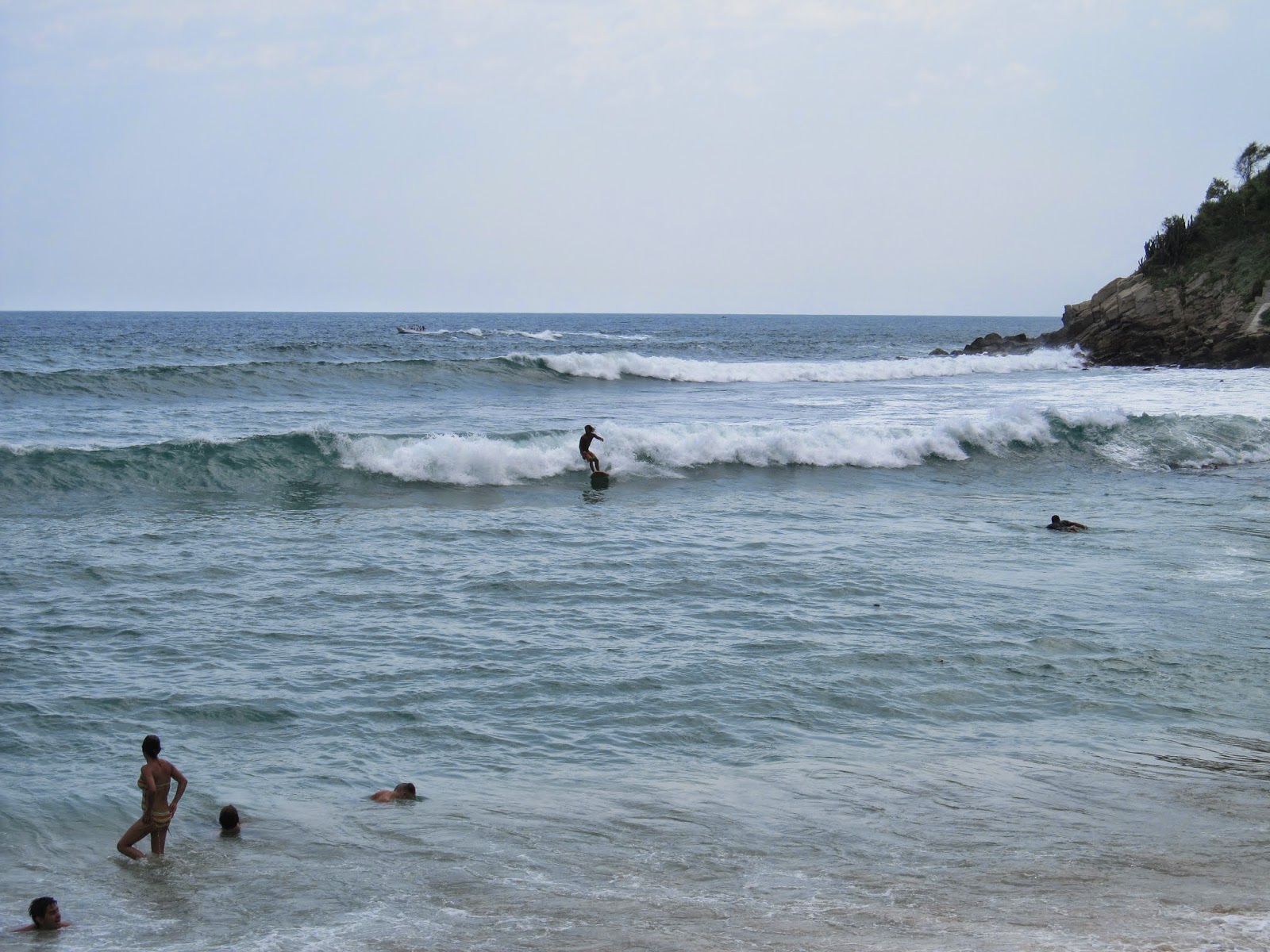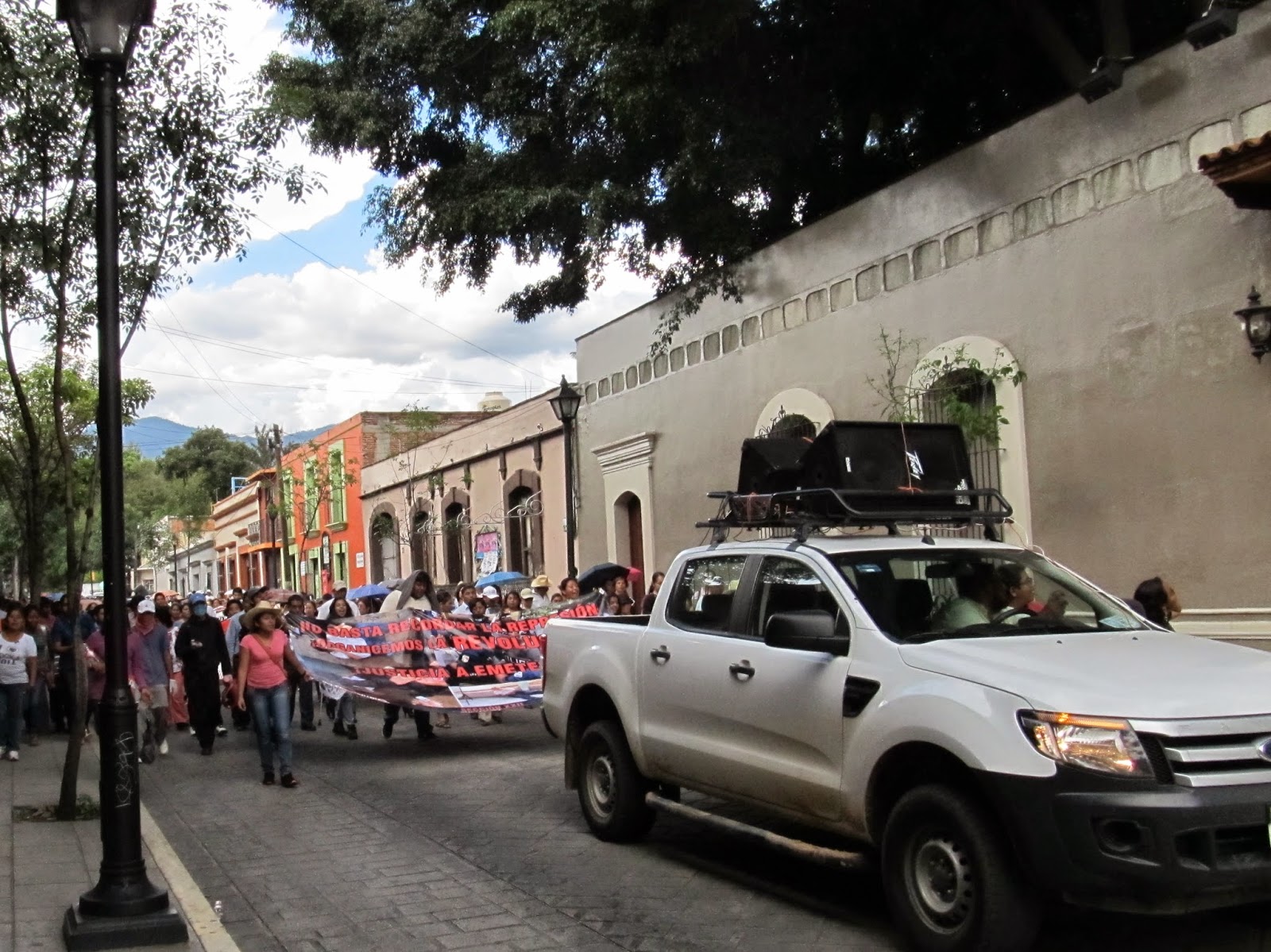The female flamingos live in different areas than the male flamingos, but they both live in some kind of shallow lakes near the coast. Only in February the male flamingos come to the females to mate. In the picture there are some male ones. In the same area you can also find crocodiles and alligators but you better not go looking for them.
To get to the cenote, we had to ride a boat through small canals in some kind of wood, which was quite adventurous. The boats did not even have motors, just some guys pushing the boat through the canals with a long pole of wood.
The cenote, which is basically a source of fresh water from underground rivers, hold beautifully clear water at a temperature so low that it was really refreshing to swim. There were also some pretty big fishes inside that swam very close to you if you did not move too much.
After that, we went to the beach for lunch (the restaurant offered lots of different ways to eat fish) and afterwards we could swim in the Golf of Mexico. But to tell the truth, the water was so warm it felt more like a bath tub than the ocean. But the beach was almost white, which offered beautiful views.
Then we were introduced to the treasure the Mayans were protecting for their wealth: the salt lakes. In this kind of lakes, for some reason, lots of salt is produced nearly all the time. There are just water (from the rain or the sea) and the sun heating up the water needed for the chemical reaction. The water in this lakes is so salty you will completely float if you lie down in the water, just like in the Dead Sea. Also, the water is very good for your skin. You just need to make sure it is not too hot before getting in.















































